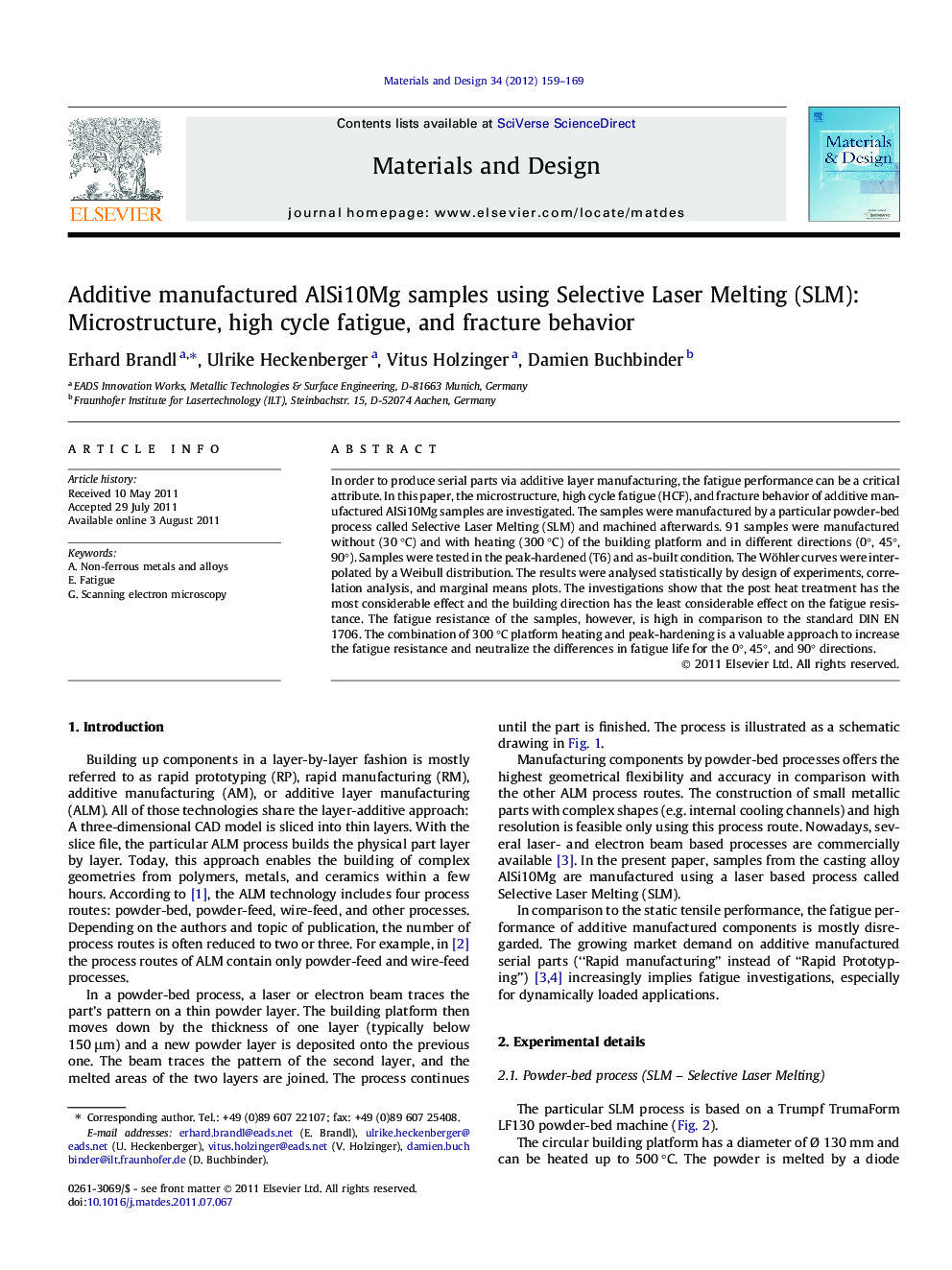| Article ID | Journal | Published Year | Pages | File Type |
|---|---|---|---|---|
| 831025 | Materials & Design (1980-2015) | 2012 | 11 Pages |
In order to produce serial parts via additive layer manufacturing, the fatigue performance can be a critical attribute. In this paper, the microstructure, high cycle fatigue (HCF), and fracture behavior of additive manufactured AlSi10Mg samples are investigated. The samples were manufactured by a particular powder-bed process called Selective Laser Melting (SLM) and machined afterwards. 91 samples were manufactured without (30 °C) and with heating (300 °C) of the building platform and in different directions (0°, 45°, 90°). Samples were tested in the peak-hardened (T6) and as-built condition. The Wöhler curves were interpolated by a Weibull distribution. The results were analysed statistically by design of experiments, correlation analysis, and marginal means plots. The investigations show that the post heat treatment has the most considerable effect and the building direction has the least considerable effect on the fatigue resistance. The fatigue resistance of the samples, however, is high in comparison to the standard DIN EN 1706. The combination of 300 °C platform heating and peak-hardening is a valuable approach to increase the fatigue resistance and neutralize the differences in fatigue life for the 0°, 45°, and 90° directions.
► The fatigue life of additive manufactured AlSi10Mg is high compared to EN 1706. ► Fatigue limit and static tensile strength significantly correlate with each other. ► Peak-hardening has the most considerable impact on the fatigue resistance. ► Breakthrough cracks start from the surface or subsurface (pores, non-melted spots).
